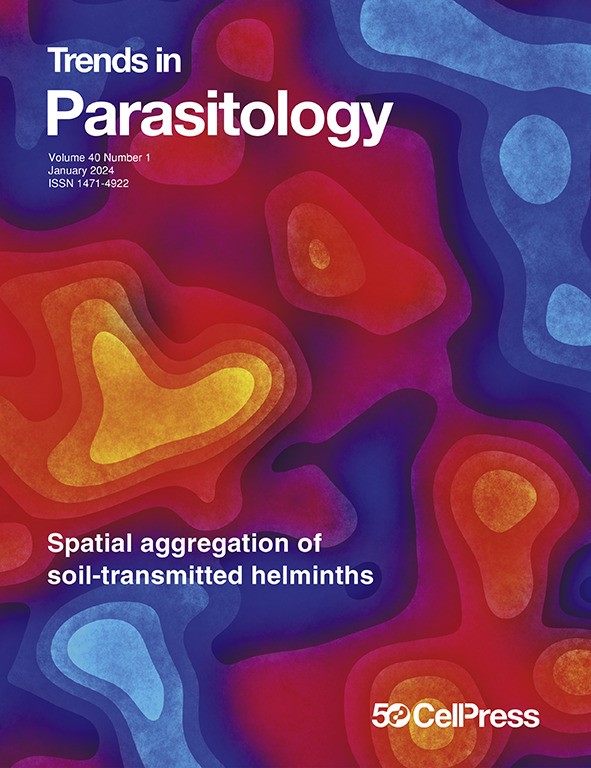升高尿酸作为抗疟靶点。
IF 6.6
1区 医学
Q1 PARASITOLOGY
引用次数: 0
摘要
疟疾每年导致数十万儿童死亡,许多幸存者留下了持久的神经损伤。虽然我们有有效的寄生虫杀灭药物,但我们需要针对疾病机制的治疗方法来改善结果。Bond等人最近报道尿酸是抗疾病治疗的潜在靶点。本文章由计算机程序翻译,如有差异,请以英文原文为准。
Elevating uric acid as an antimalarial target.
Malaria causes hundreds of thousands of deaths each year in children, and many survivors are left with lasting neurological injury. While we have effective parasite-killing drugs, we need treatments that target disease mechanisms to improve outcomes. Bond et al. recently reported uric acid as a potential target for anti-disease therapy.
求助全文
通过发布文献求助,成功后即可免费获取论文全文。
去求助
来源期刊

Trends in parasitology
医学-寄生虫学
CiteScore
14.00
自引率
3.10%
发文量
148
审稿时长
6-12 weeks
期刊介绍:
Since its inception as Parasitology Today in 1985, Trends in Parasitology has evolved into a highly esteemed review journal of global significance, reflecting the importance of medical and veterinary parasites worldwide. The journal serves as a hub for communication among researchers across all disciplines of parasitology, encompassing endoparasites, ectoparasites, transmission vectors, and susceptible hosts.
Each monthly issue of Trends in Parasitology offers authoritative, cutting-edge, and yet accessible review articles, providing a balanced and comprehensive overview, along with opinion pieces offering personal and novel perspectives. Additionally, the journal publishes a variety of short articles designed to inform and stimulate thoughts in a lively and widely-accessible manner. These include Science & Society (discussing the interface between parasitology and the general public), Spotlight (highlighting recently published research articles), Forum (presenting single-point hypotheses), Parasite/Vector of the Month (featuring a modular display of the selected species), Letter (providing responses to recent articles in Trends in Parasitology), and Trendstalk (conducting interviews). Please note that the journal exclusively publishes literature reviews based on published data, with systematic reviews, meta-analysis, and unpublished primary research falling outside our scope.
 求助内容:
求助内容: 应助结果提醒方式:
应助结果提醒方式:


